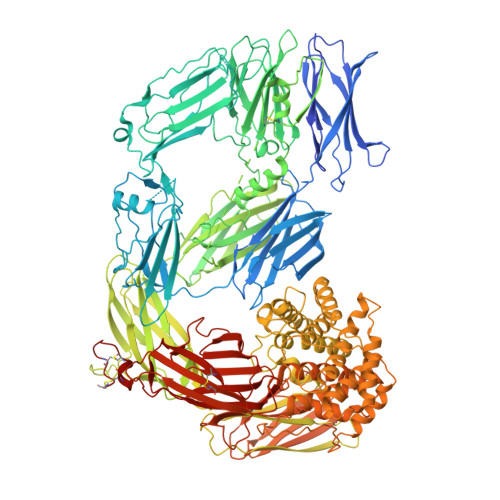Three cryo-EM structures of CD109 reveal its mechanism of protease inhibition.
Almeida, A.V., Jensen, K.T., Harwood, S.L., Jorgensen, M.H., Nielsen, N.S., Thogersen, I.B., Enghild, J.J., Andersen, G.R.(2025) Cell Rep 44: 115787-115787
- PubMed: 40482031
- DOI: https://doi.org/10.1016/j.celrep.2025.115787
- Primary Citation of Related Structures:
8S3O, 9FX2, 9FX3 - PubMed Abstract:
CD109 is a glycosylphosphatidylinositol-anchored protein. In addition to regulating transforming growth factor β (TGF-β) network signaling, CD109 is also a protease inhibitor. Protease cleavage of its bait region triggers a conformational change releasing the major fragment from the cell surface, exposing a reactive thioester that can conjugate proteases. To understand this protease inhibition mechanism, we determined cryoelectron microscopy structures of CD109 in native, protease-activated, and methylamine-activated conformations. Despite CD109's low sequence similarity with the protease inhibitor A2ML1, CD109 adopts a similar protease-activated conformation, suggesting a shared mechanism of protease inhibition. Deglycosylation of CD109 does not affect chymotrypsin conjugation but enhances substrate access, suggesting that CD109 glycans contribute to protease inhibition. Our data provide a structural basis for understanding CD109's protease-triggered membrane release, its protease inhibitory mechanism, and additional biological functions.
- Department of Molecular Biology and Genetics, Aarhus University, Universitetsbyen 81, 8000 Aarhus C, Denmark.
Organizational Affiliation:

















